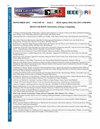Mangrove semantic segmentation on aerial images
IF 1.3
4区 工程技术
Q3 COMPUTER SCIENCE, INFORMATION SYSTEMS
引用次数: 0
Abstract
In the Yucatan Peninsula, there is a rich diversity of mangroves, notably including Rhizophora mangle, Avicennia germinans, and Laguncularia racemosa. These mangroves contribute to the recovery of degraded natural areas caused by human activities. Additionally, they serve as natural habitats for various animal and plant species. Studies have highlighted the significance of preserving and restoring these species through traditional methods. More recently, the integration of remote sensing and deep learning techniques has allowed for the automated detection and quantification of mangroves. In this study, we explore the application of deep neural network techniques to address computer vision challenges in the field of remote sensing. Specifically, we focus on the detection and quantification of mangroves in remote image sensing, employing transfer learning and fine-tuning with three distinct deep neural network architectures: SegNet-VGG16, U-Net, and Fully Convolutional Network (R-FCN), with the latter two based on the ResNet network. To evaluate the performance of each architecture, we applied key evaluation metrics, including Intersection over Union (IoU), Dice Coefficient, Precision, Sensitivity, and Accuracy. Our results indicate that SegNet-VGG16 exhibited the highest levels of Precision (98.03%) and Accuracy (97.03%), while U-Net outperformed in terms of IoU(96.97%), Dice Coefficient (92.20%), and Sensitivity (96.81%).航拍图像上的红树林语义分割
尤卡坦半岛的红树林种类丰富,主要包括 Rhizophora mangle、Avicennia germinans 和 Laguncularia racemosa。这些红树林有助于恢复因人类活动而退化的自然区域。此外,它们还是各种动植物物种的自然栖息地。研究强调了通过传统方法保护和恢复这些物种的重要性。最近,遥感和深度学习技术的结合使得红树林的自动检测和量化成为可能。在本研究中,我们探讨了如何应用深度神经网络技术来应对遥感领域的计算机视觉挑战。具体来说,我们将重点放在遥感图像中红树林的检测和量化上,利用三种不同的深度神经网络架构进行迁移学习和微调:SegNet-VGG16、U-Net 和全卷积网络 (R-FCN),后两者基于 ResNet 网络。为了评估每种架构的性能,我们采用了关键的评估指标,包括交集大于联合(Intersection over Union,IoU)、骰子系数(Dice Coefficient)、精确度(Precision)、灵敏度(Sensitivity)和准确度(Accuracy)。结果表明,SegNet-VGG16 的精确度(98.03%)和准确度(97.03%)都达到了最高水平,而 U-Net 的 IoU(96.97%)、Dice Coefficient(92.20%)和灵敏度(96.81%)都优于 SegNet-VGG16。
本文章由计算机程序翻译,如有差异,请以英文原文为准。
求助全文
约1分钟内获得全文
求助全文
来源期刊

IEEE Latin America Transactions
COMPUTER SCIENCE, INFORMATION SYSTEMS-ENGINEERING, ELECTRICAL & ELECTRONIC
CiteScore
3.50
自引率
7.70%
发文量
192
审稿时长
3-8 weeks
期刊介绍:
IEEE Latin America Transactions (IEEE LATAM) is an interdisciplinary journal focused on the dissemination of original and quality research papers / review articles in Spanish and Portuguese of emerging topics in three main areas: Computing, Electric Energy and Electronics. Some of the sub-areas of the journal are, but not limited to: Automatic control, communications, instrumentation, artificial intelligence, power and industrial electronics, fault diagnosis and detection, transportation electrification, internet of things, electrical machines, circuits and systems, biomedicine and biomedical / haptic applications, secure communications, robotics, sensors and actuators, computer networks, smart grids, among others.
 求助内容:
求助内容: 应助结果提醒方式:
应助结果提醒方式:


